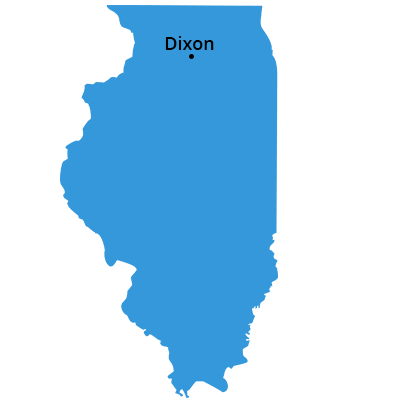Do you think that you might have termites in your home? If so, what can you do about them? Are termites in St. Charles as bad as you've heard? The big issue with termite control for termites in our area is that they are incredibly elusive. When you apply termite control products, you need to consider how difficult it is to detect these pests and use a control solution that overcomes the challenge.
Today, we'll walk you through each of the factors you should consider when evaluating what you should do about termites. We'll explain the sneaky way these insects operate. We'll explore the conditions you can alter to create a buffer between your home and these wood-damaging pests. Then, we'll examine termite control methods and explain what works best and why. If that sounds like a plan, read on and enjoy. If you'd rather have a termite control professional deal with termites for you, we're happy to help with that as well.
Contact PCC for a termite inspection in St. Charles and get started with a termite control plan.

What Does A Termite Infestation Look Like?
Often, a termite infestation doesn't look like much at all. Subterranean termites are masters of hiding in the shadows. That is why they cause so much destruction. They can enter your yard by tunneling in the ground. They can enter your home by tunneling into wood that touches the soil. They can carve out galleries inside studs and other wood timbers as they slowly consume the wood they find, and they do this from the inside out.
When you search for signs of active termites, you need to keep in mind the sneaky nature of worker termites. A worker termite has two reasons to stay hidden. First, it does not like the light. It wants to live in darkness. Second, it does not enjoy dry air. Dry air to a termite worker isn't the same as it is to a human. These termites require high humidity or moisture to come out of hiding.
Are you starting to see the picture? Great. Now, it is time to consider the warning signs you might find in your yard or inside your home.
Structural Changes:
The worst warning sign of an infestation is when you start to see interior structural changes, such as sagging floors or walls that bulge out. These mean you have had termites for many years.
Interior Swarm:
Finding termite swarmers in your home is almost as bad as noticing interior structural changes. The appearance of winged termites inside your home is evidence of a severe infestation. Why? Because the nest is close enough to your home that the swarmer termites emerged from it indoors by mistake.
Exterior Swarm:
Another bad termite sign is a bed of termite swarmers in your landscaping. If you see lots of termites crawling on the ground, there is a good chance that they're on top of the nest where they live. That means worker termites don't have to travel far to damage your home. Finding swarmers in, near, or on your home is always a bad sign because a termite nest only releases swarmer termites after the colony matures, which can take more than three years.
Worker Termites:
When you're working in your yard, you might uncover worker termites hiding under a board, stick, junk, or some other object on the ground. Termite workers are about 1/8 of an inch and look like milky white ants. You may also see soldier termites with them, which have orange heads and black pincers. Seeing worker termites indicates that you have active termites in your yard; unfortunately, there is no knowing how many.
Shelter Tubes:
When workers try to get into your home, they may need to create tubes of mud, which is why they're often called mud tubes. These tubes aren't much to look at. They are only wide enough to allow a termite to crawl through. That's about the width of a pencil. When many tubes are on top of each other, shelter tubes can begin to take on a stalagmite appearance. But, typically, they are one thin line or a line that branches off as it rises from the soil. Look for these tubes in dark, damp places, not in the open.
Termite Damage:
It is rare to see termite damage, but it is possible if you look in places that are dark and humid. Damage caused by termites looks like trenches stacked on top of one another. If you touch these trenches, you'll notice that they are gritty. Termites line their tunnels with soil dampened by saliva.
It isn't easy to catch the warning signs of termite activity. But there are ways to deter termites without seeing them. Let's take a look at some of the factors that lure termites onto your property and give them what they need to grow their colonies quickly.
How To Identify And Remove Factors That Attract Termites
Termites eat wood. But, as we pointed out above, the evidence of termite damage is mostly hidden inside the wood the termites are eating. But you don't have to see damage to know that something in your yard is a potential food source for these insects. Here are a few ways to hide food (wood sources) from termites:
- Store firewood and dead branches in a container to keep wood from sitting on the soil where termite workers can get to it.
- Replace any landscaping borders made of wood. Rocks are a good replacement.
- Consider replacing mulch with pea stone.
- Consider replacing wooden fences with vinyl fences.
- Address any structural wood that touches the soil, such as skirting, deck posts, etc.
- Store all junk piles in containers as termites feed on cardboard, paper, clothing, and other items that have cellulose.
Along with termite food, it is essential to consider moisture as an attractant. Termite workers prefer humid soil to dry soil. If you have a gutter clog, it can cause moist conditions near your home that will draw the attention of termite workers. Water issues can also dampen wood and lead to wood rot, which termites will notice.
If you diligently take steps to remove their food sources in your yard and address moisture problems, you can deter termite workers from coming into your home. You'll also stunt colony growth. When combined with routine inspections, you'll have some protection from termites.
Are DIY Termite Control Methods Effective?
It is hard work to manage attractants and perform inspections to find termites. For this reason, many people turn to DIY termite control when they notice worker termites, a termite-infested tree, mud tubes, or some other warning sign of termite activity. Unfortunately, DIY termite control methods are rarely effective. There are many reasons they fall short. Here are a few to consider:
- Home remedies shared online lead many people to trust methods not backed by science.
- Over-the-counter liquid termiticides can offer protection but fail without establishing a complete barrier.
- When applying termiticides around a home, there are conditions that can cause the materials to become inert.
- Some residents turn to termite bait stations for an easy fix but select products that aren't well-tested and lack efficacy.
DIY termite control is hit-or-miss. If you miss, you may not realize it for years. Doing this may allow these sneaky insects to continue to damage your property right under your nose. It's a horrible feeling to know that you put the time, effort, and money into protecting your property, only to find you have extensive termite damage.
The Best Way To Protect Your Home From Termites
When it comes to getting control of termites, don't settle for less than termite control offered by a licensed pest control professional. Termite control products work best when applied by a trained and certified technician. Here are a few of the ways PCC deals with termites.
- We offer inspections that come with a wood-destroying insect report. These are great for when you're buying or selling a property.
- We offer annual inspections and bare bones termite control.
- We apply liquid treatments in the soil around structures for ongoing termite damage prevention.
- We install termite bait stations to monitor termite activity and easily catch worker termites when they come looking for a meal.
- We provide Bora-Care treatments, which are great for new constructions. The Bora-Care liquid treatment is applied directly to structural wood and gives long-lasting protection against termite damage.
When you need pest control services in St. Charles, you can count on PCC for comprehensive and customized control to fit your specific needs. We have all the options you need for arresting a termite infestation, guarding against infestations, monitoring termite activity, and evaluating conducive conditions on your property.
Get started by navigating to our contact page and telling us about your termite control issue or concerns. We'll get back to you quickly and help you find the best fit for your needs.
 Customer Reviews
Customer Reviews
